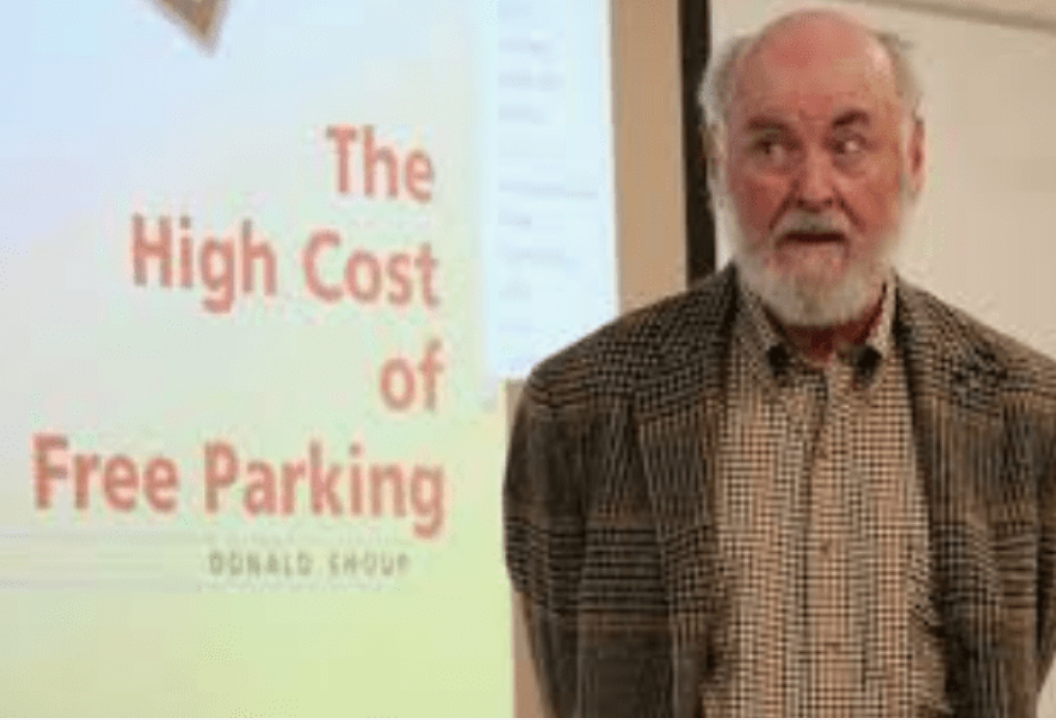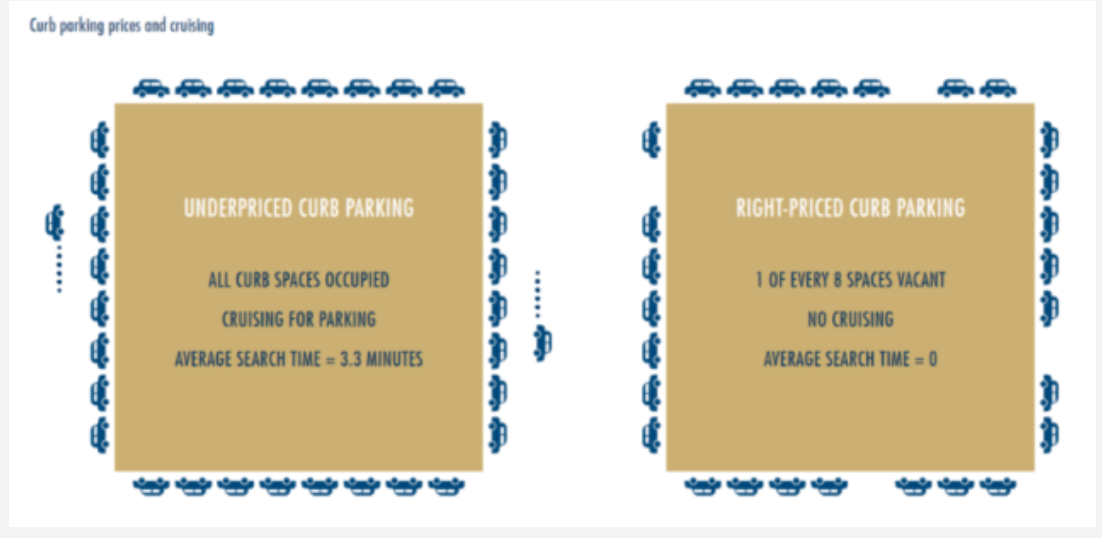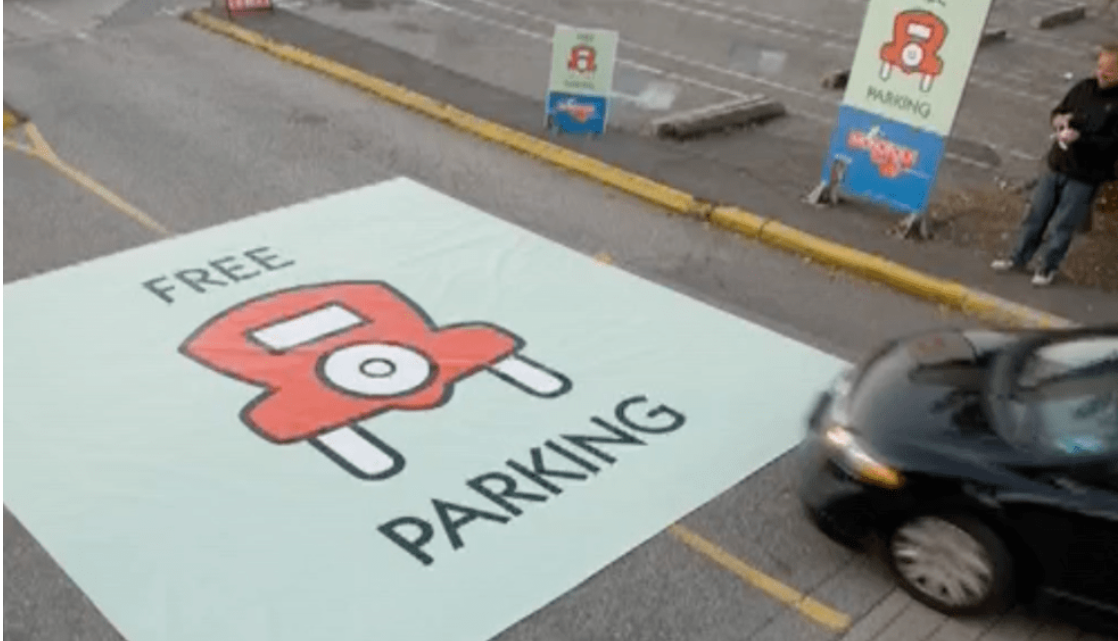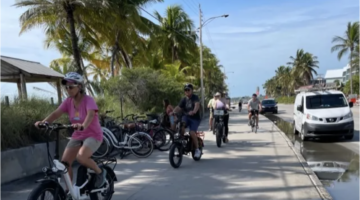Streets for People / Getting the Parking Right Leads to Streets for People – Part 1: Nobody Goes there Anymore. It’s Too Crowded – Six Reasons for Right Pricing Parking
Parking is a big subject, so we’re going to break this story into two. This week we’ll set up the problem and discuss why the topic should be addressed. Next week we’ll discuss specific solutions in: “Part 2: Battling Our Inner George Costanza – Eight Things We Can Do in Downtown Key West to Get the Parking Right”
Part 1: Nobody Goes there Anymore. It’s Too Crowded – Six Reason for Right Pricing Parking
There are approximately 3,000 on-street parking spaces in Old Town below White Street. About 1/3 of these spaces are metered, 1/3 are marked Residential and 1/3 are unmarked. Residential Permits can be had for $20 annually or $0.05 cents per day. The unmarked spaces are FREE. That means two thirds of downtown’s public, on-street parking spaces are virtually FREE. And the metered spaces are fairly low priced.
In addition, City and County employees are provided free parking downtown and people with those’ $0.05 Cents a Day’ Residential Permit Parking passes can park FREE for four-hours in many close-in City and County lots and the beaches. What’s the result of all this underpriced parking?
“Nobody Goes There Anymore. It’s Too Crowded.”

Traffic and parking congestion is the result. It ruins everything. In a City-sponsored survey in 2015, traffic was ranked the number three “biggest issue” on the island, behind affordable housing and cost of living. We often hear residents lament something along the lines of the old Yogi Berra saying in referring to downtown Key West. “Nobody goes there anymore. It’s too crowded.” Islanders often don’t want to go out to eat or a movie/entertainment or shopping downtown because they perceive it’s too crowded. The streets are too congested. It’s too hard to find parking. There are too many cars. Many people don’t consider alternatives because they perceive all that traffic and parking congestion makes it less safe and easy to bike downtown. And our City bus system is in need of a radical overhaul if we expect people to actually use it.
You Can’t Eat Your Cake and Then Still Have It Too
So why do we have so much free and nearly free parking if it only exacerbates the problem? Why are we making it so easy to drive when it just makes downtown too crowded to want to go to? Perhaps because our leaders want to have their cake and eat it too. Meaning, although research, data and common sense tell us providing a scarce commodity like parking for virtually nothing causes problems, our politicians are loathed to do anything about it because they want the majority of their car-driving constituents to be happy or at least experience no pain. But is anybody really happy when half of us won’t go downtown because it’s too crowded and the other half is unhappy because there is never any parking available in their neighborhood?
In a January, 2021 community survey of Key West residents done in conjunction with the new Key West Strategic Plan, just released by the City on Wednesday, March 11, parking and traffic flow were in the bottom three of the worst rated services of the City, coming in at 16 and 17 of 18 rated items. So, if the City leaders think that by sticking their heads in the sand and not addressing the parking issue by right pricing parking, they are making the voters happy, they are sadly mistaken.
If we want to make a dent in traffic and parking congestion, we need to apply the right parking strategies. We must manage our community’s parking to its maximum. We can’t give it away or subsidize it (underprice it), as this makes congestion worse AND works against people using alternatives to driving. Somebody has to have the guts to say enough.
Six Reasons for Right Pricing Parking
When you have a scarce resource like parking spaces and you have a lot of demand for that resource, the best way to manage that is to price it properly. It’s a simple economic principal. But to get there, perhaps we need some additional reasons to undergird the decision to right price parking. These six reasons help further explain, why we need to do so:
1 – Right Pricing Parking Discourages Cruising for On-Street Parking

When a city undervalues parking by providing free, nearly free, and underpriced metered parking, many people think if they just try hard enough, they’ll find a spot. When you undervalue street parking it encourages driving and causes congestion. Research indicates that in some congested downtowns up to 1/3 of cars are cruising for underpriced curb parking. This cruising causes congestion and pollution.
“A surprising amount of traffic isn’t caused by people who are on their way somewhere. Rather it is caused by people who have already arrived. Our streets are congested, in part, by people who have gotten where they want to be but are cruising around looking for a place to park.” says Parking Guru and UCLA Professor Donald Shoup in this article: Cruising for Parking.
2 – Right Pricing Parking Encourages Turnover for Retail

Metered parking should be tailored to encourage turnover in retail areas to help small Mom and Pop shops. People who want to park for longer periods should be directed to long-term parking lots. Also, metered parking should reflect location and time of day/week/season. For example, metered parking one block from Duval or retail shouldn’t be the same price as metered parking three blocks away. Likewise, parking rates, Christmas through Easter, should be higher than in the off-season. Right pricing metered parking is a science according to Donald Shoup. So, what’s the right price for curbside parking? According to the professor and author of The High Cost of Free Parking, “the right price is the lowest price you can charge and still have one or two spaces available on each block.” He says the sweet spot for pricing meters is where 85% of parking spaces in a given area, at a given time, are occupied or one or two open spaces per block. If the spaces are always full or empty than you’ve missed the mark.
In our case, people visiting downtown look for either an unmarked free space or if they have a Residential Parking Permit, they can look for those too. The problem is, close-in residential streets are where everyone wants to find this free parking, making it very difficult for those who live in the core to park in their own neighborhood, let alone their own block or in front of their home. Likewise, when we underprice metered parking, it encourages people who should be using long-term lots or even could be using the bus or biking, to drive and park for work. This doesn’t help retail, restaurants and attractions who need the turnover.
3 – Right Pricing Parking Encourages Visitors to Park in Long-Term Lots and Stay There
According to a 2019 Study published in the Journal of Transportation Demand Management at the University of South Florida entitled “Toward Car-Free Key West” by Mary Bishop, 82% of visitors to Key West arrive by vehicle, either their own or a rental. The same study referenced the Key West Chamber saying there were 2.7 million visitors to Key West in 2015. In answering the question “How did you get to the Keys for this trip?” in a 2019 TDC Visitor Profile Survey overnight visitors said: 36% by personal vehicle, 29% rental vehicle, 8% fly into Miami and rent a car for a total of 73% by car. Twenty-three percent (23%) flew directly into Key West Airport, 3% into Marathon Airport and 1% came by tour bus.
However you slice and dice the data, between day trippers and overnight stays, THAT’S a lot of cars on our little island. Overnight and day visitors, prefer to find free parking. Many of our downtown hotels, inns and B&Bs don’t provide adequate parking. So, faced with a choice of hunting for those elusive 1,000 unmarked free spots downtown or paying upwards of $20 a day or night for parking, it isn’t surprising that many overnight and day visitors choose to try and park in the neighborhood.
4 – Right Pricing Parking is Fair and Equitable for All
Former New York City Transportation Commissioner Janette Sadik-Kahn said: “Streets are some of the most valuable resources that a city has, and yet it’s an asset that’s largely hidden in plain sight.” Streets and sidewalks take up 25 to 50 percent of a typical U.S. city’s land. New York City, for example, is on the lower end of that scale at 28 percent and Chicago (42 percent), Washington D.C. (43) and Portland, Oregon (47) are at the higher end. I wish I could figure out Key West’s percentage, but it is likely in this range. Is it fair that so much of our community’s valuable asset is provided so cheaply for the sole purpose of providing car storage for people who can afford to own and maintain cars? Simply put, the answer is no.
Providing parking isn’t free. And no, the gas tax you pay doesn’t cover the cost of maintaining our roads. General taxes on everyone pay as much or more. The cost of land, pavement, street cleaning, and other services related to free parking spots come directly out of tax dollars (usually municipal or state funding sources). Each on-street parking space is estimated to cost around $1,750 to build and $400 to maintain annually. In a place like Key West, the cost is likely higher because this doesn’t include the cost of the real estate underneath the asphalt. “That parking doesn’t just come out of thin air,” Shoup says. “So, this means people who don’t own cars pay for other peoples’ parking. Every time you walk somewhere, or ride a bike, or take a bus, you’re getting shafted.”
5 – Right Pricing Parking Limits a Wasteful Use of Valuable Land
According to Zillow in 2020, the average value of real estate in Key West is $692 per square foot. We realize values are going up and that real estate downtown around Duval Street is worth even more, but we’ll be real conservative here. Say that typically on Duval, half of that value is for the land or $346 per square foot. A typical parking space is 160 square feet (20″ x 8″). Do the math. That parking space is worth $55,360. Would you give this away free or underprice it? How would you price the value of something we say we want less of?
Put this another way. 3,000 on street parking spaces is equivalent to 110 acres of land (3,000 parking spaces x 160 sq. ft. = 480,000 sq. ft = 110.2 acres). When there’s an affordable housing crisis and bikes and pedestrians are squeezed on our streets, is 110 acres of car storage really the best use of this valuable land?
6 – Right Pricing Parking Provides Additional Revenue for Transportation Alternatives
While not the main goal of right pricing parking, it will bring in additional revenue. A good portion of that additional revenue should go into the City’s Transportation Alternatives Fund or TAF that provides things like the Duval Loop and City bus service, the Transportation Coordinator’s salary, bicycle racks, bus stop signage, protected bicycle lanes, wayfinding signage and more.
As you can see, there are many reasons why we’d want to right price and properly manage our parking supply. Next week, on March 19, we’ll bring you specific solutions in: Part 2: Battling Our Inner George Costanza – Eight Things We Can Do in Downtown Key West to Get the Parking Right.
# # #
Recent stories from the KONK Life Streets for People column:
- Eight Things We Can Do to Pedestrianize Duval and Still Allow Cars; March 5, 2021
- How We Get Wider Sidewalks Downtown Without Ripping Up the Streets; February 26, 2021
- The Wee Donkey, Whataboutism, Bathwater and Duval Street’s Future; February 19, 2021
- Averting E-Bike Mayhem and Making Key West Sidewalks Safer; February 12, 2021
- Sustainability Board Wants to Make Free, Frequent and Simple Key West Transit a Reality; February 4, 2021
- Volunteers and a Little Green Paint Show How We Can Make It Safer to Bike; January 29, 2021
Chris Hamilton is founder of the local advocacy group Friends of Car-Free Key West & Duval Street/Historic Downtown. He’s a native of the District of Columbia, where for a couple decades+ he led nationally renowned efforts promoting transit, bike, walk and smart growth for Arlington County, VA’s DOT. Chris has lived in Key West since 2015. He lives downtown and works and volunteers for a couple non-profits.
[livemarket market_name="KONK Life LiveMarket" limit=3 category=“” show_signup=0 show_more=0]








No Comment